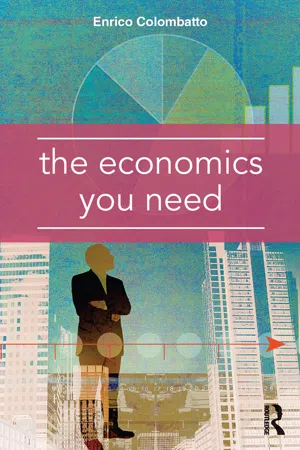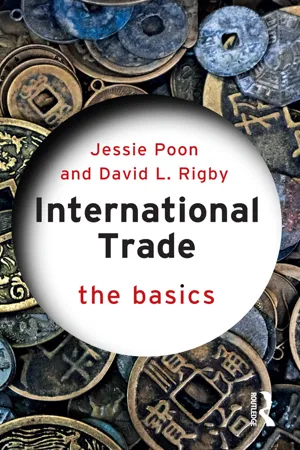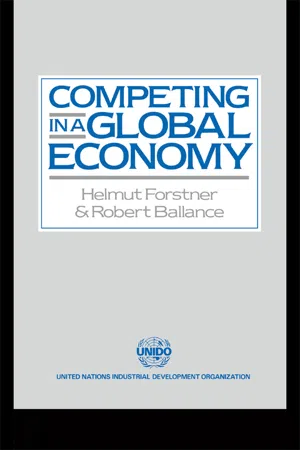Economics
Pattern of Trade
A pattern of trade refers to the specific mix of goods and services that a country exports and imports. It is influenced by factors such as comparative advantage, resource endowments, technological capabilities, and government policies. Understanding a country's pattern of trade is important for analyzing its economic strengths and weaknesses, as well as for formulating trade policies.
Written by Perlego with AI-assistance
Related key terms
Related key terms
1 of 4
Related key terms
1 of 3
4 Key excerpts on "Pattern of Trade"
- eBook - ePub
International Trade
New Patterns of Trade, Production and Investment
- Nigel Grimwade(Author)
- 2020(Publication Date)
- Routledge(Publisher)
Chapter 3 . Usually, the term 'conventional' is restricted to the theory of trade expounded by the Classical and Neo-Classical schools of economic thought. However, this chapter also discusses some of the attempts of post-war economists to explain patterns of international trade and specialisation in a world where consumer preferences cannot be assumed to be identical and where technological innovation plays an important role.Essentially, the basic theory of trade is concerned with answering two questions. The first seeks to explain how and why countries may gam from trade. The second seeks to explain the Pattern of Trade and specialisation, that is, why certain countries export particular goods and import others. An answer to the first question was provided by the Classical economists writing in the late 18th and early 19th centuries. An initial attempt at answering the second question was made by the Neo-Classical School in the late 19th and early 20th centuries. Differences in relative efficiencies were seen to be the result of differences in the amounts of the different factors of production with which each country was endowed. This, however, attaches primary importance to differences on the cost side and ignores the influence of demand-side factors in determining patterns of trade. It also fails to give sufficient weight to differences in the availability of newly created knowledge in shaping international specialisation and in affecting changes in specialisation over the course of time. - eBook - ePub
- Enrico Colombatto(Author)
- 2016(Publication Date)
- Routledge(Publisher)
Certainly, the theory of comparative cost is persuasive when one has in mind natural-resource endowments, and it rationalises one's intuitive explanation of why Saudi Arabia specialises in oil extraction and production, while agricultural goods and processed food figure prominently – for example – in Argentinean exports. Yet, nowadays food, agricultural products and fuels account for about one-third of world trade. What about the remaining two-thirds? And what about the pattern of specialisation between countries in which natural resources have a limited role? Moreover, how do we explain the fact that most countries produce the same broad categories of goods – e.g., cars, furniture, chemical products – and yet they trade intensively, exporting and importing the same goods? In other words, does it still make sense to investigate the patterns of international trade?The quick answer to these questions is that the traditional comparative-cost theory explains trade patterns when one can clearly identify country-specific resource endowments. It seems less helpful, however, when the origin of comparative cost has little to do with natural resources. To explain this last set of situations and the trade patterns they generate, economists have produced different lines of reasoning that refer to agglomeration, institutions and product differentiation. These concepts are illustrated in the next three sections.8.4 Agglomeration
As mentioned above, in order to explain the structure of trade flows unrelated to the presence of natural resources, economists have offered different theories. One refers to historical circumstances and cultural legacies, arguing that an industry is born in a given country by happenstance (e.g. as a result of an isolated act of brilliant entrepreneurship) and then flourishes there by building on tradition, experience (learning by doing), and reputation. Such, for example, could have been the case for Swiss clockmakers, Dutch diamond cutters, or French and Italian fashion designers. This is plausible, but how can we account for the lasting effects of historical accidents in a globalised world? What can keep the entrepreneurial focus alive, help it to develop, and make it difficult for far-away competitors to acquire significant market shares? The key is agglomeration. - eBook - ePub
International Trade
The Basics
- Jessie Poon, David L. Rigby(Authors)
- 2017(Publication Date)
- Routledge(Publisher)
2 Trade TheoryIn Chapter 1 we illustrated the rising importance of trade within the world economy. Increases in the ratio of imports or exports to gross domestic product (GDP) are common to many countries, especially over the past fifty years or so. Yet, the expansion of trade is not universally supported. Some fear that trade is to blame for job losses and stagnant wages in both advanced industrialized nations as well as emerging economies. Others suggest that trade might damage the growth prospects of developing nations as a whole. And, there are mounting concerns about the influence of trade on food security and the environment. If trade is so bad, why do most countries actively support the exchange of goods and services across their borders? The simple reason is that there are gains from trade. From the ability to access a greater variety of goods and services, to the more efficient utilization of a country’s Resources, the benefits of free trade (trade that is not restricted by taxes or other forms of regulation on imports or exports) often outweigh the costs of opening an economy to international competition.While it is relatively easy to show the existence of gains from trade, how those gains are distributed between countries and across different groups within countries is a more complicated question. The aim of this chapter is to explore different theories of international trade, to show how the economic gains from trade are generated and to discuss the factors that influence who captures those gains. We open the discussion with the standard introduction to trade in the form of a model of comparative advantage. Our understanding of trade is extended by investigating the distribution of trade benefits within countries via the Heckscher–Ohlin (H-O) theorem. Models of international trade that rest upon the framework of monopolistic competition are introduced next. These models help us understand why countries that produce similar products trade with one another. A new basis for trade in the form of global outsourcing ends our overview of trade theory. The discussion ends with a brief summary of key points. - eBook - ePub
Competing in a Global Economy
An Empirical Study on Trade and Specialization
- Robert Ballance, Helmut Forstner(Authors)
- 2003(Publication Date)
- Routledge(Publisher)
The growing share of manufactures in total exports represents only part of the overall adjustment process. Of equal importance are the underlying shifts that must have occurred in order to accommodate a reorientation of this magnitude. Trade theory offers a natural point of departure for an examination of these issues. The following section considers trading patterns in terms of alternative trade theories.The inter-industry structure of world trade in manufactures
Long-term patterns of trade in manufactures can be more easily linked with underlying determinants if traded goods are grouped in a relatively few categories which, in turn, can be associated with existing trade models. The Ricardian, H–O and product-cycle models were chosen for this purpose. When industries are arranged in such a manner, they represent a continuum of trade which reflects the importance of various factors of production. Although these factors can be identified only in generic terms, the results provide a rough indication of the types of industries in which countries specialize. The statistical classification used to construct these three trade categories draws upon previous studies (Hufbauer and Chilas, 1974; Hirsch, 1974; UNIDO, 1981) and is presented in the statistical appendix (Appendix B ).A Ricardian interpretation
Manufactures containing a high proportion of domestic natural resources are described as Ricardian goods. A country’s ability to produce these goods and to compete in international markets is determined largely by the quality and amounts of its resource endowments. The direction of world trade in Ricardian goods is generally expected to be from developing to developed countries, because much of the world’s supply of natural resources is found in developing countries. The existing distribution of natural resources is due primarily to chance, as in the case of oil, where the bulk of world reserves are located in the Middle East. In the case of some resources, the domestic supplies of developed countries provided the original impetus for industrialization and were subsequently depleted—for example, the oil reserves of the USA or coal and other minerals in Europe.
Index pages curate the most relevant extracts from our library of academic textbooks. They’ve been created using an in-house natural language model (NLM), each adding context and meaning to key research topics.
Explore more topic indexes
Explore more topic indexes
1 of 6
Explore more topic indexes
1 of 4



